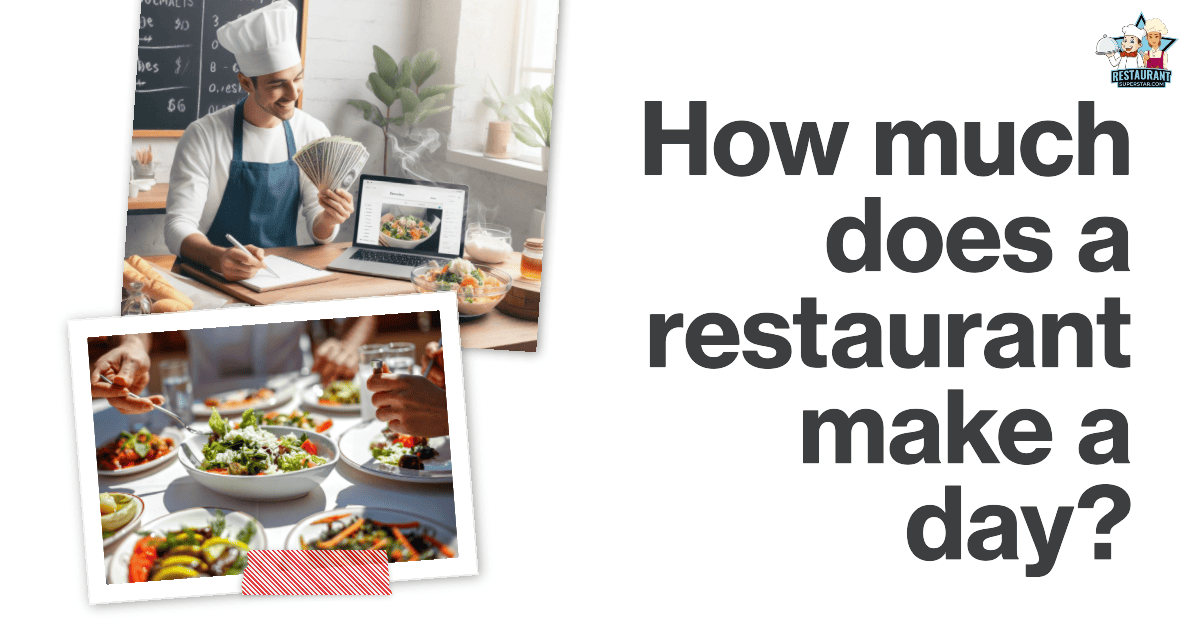How Do Restaurants Pay Their Employees?
You are in the right place if you’re wondering, “How Do Restaurants Pay Their Employees?” This article will cover this question and delve into many other crucial aspects, offering a comprehensive guide to understanding restaurant payroll systems.
How Do Restaurants Pay Their Employees?
How Do Restaurants Pay Their Employees? Restaurants employ various methods to compensate their staff, catering to the diverse roles within this dynamic industry. From hourly wages to salaried positions, the payment structure in restaurants is tailored to meet the demands of each specific role. Hourly pay is prevalent among front-of-house and back-of-house staff. At the same time, managerial and chef positions often have a fixed salary.
But that’s just the tip of the iceberg. While you have a fundamental answer, there’s much more to explore.
This article will cover everything you need about “How Do Restaurants Pay Their Employees?” We’ll dive into the intricacies of different payment methods, the culture of tipping, and the legalities surrounding wages.
Whether you’re a new restaurant owner, a young chef stepping into the culinary world, or simply curious about the restaurant industry’s pay practices, this article promises to keep you engaged with valuable insights and essential information.
Stay tuned as we unravel the layers behind the simple question of how restaurants manage their payroll.
Prepare to be enlightened with knowledge that is not only crucial but also incredibly fascinating.
So, why is it so important to understand these payment methods?
If you’re a new restaurant owner or a young chef just starting out, getting a grip on these payment structures is critical to navigating the industry successfully.
Not only does it help in managing finances effectively, but it also ensures that you’re on the right side of the law and treating your staff fairly.
And for those simply curious about the behind-the-scenes of their favorite eateries, this knowledge sheds light on the inner workings of the restaurant world.
Here’s a sneak peek into what we’re diving into:
- Hourly Wages: The most common method, especially for those bustling around as servers, cooks, or dishwashers. It’s straightforward – work an hour, get paid for an hour.
- Salaried Positions: Think head chefs and managers. These roles often come with a fixed salary, reflecting their expertise and constant need, regardless of hours worked.
- Tipping Culture: An integral part of the restaurant industry, tipping significantly boosts income for many employees.
- Payment Methods: From direct deposits to the occasional, albeit rare, cash payment, we’ll explore how these methods work in the real world.
Whether you’re calculating costs for your new restaurant, dreaming of your first chef’s hat, or just curious about the restaurant industry, understanding how these payments work is essential.
So, let’s dive in and unravel the complexities of “How Do Restaurants Pay Their Employees?” You’re in for an enlightening journey.
Overview of Pay Structures in Restaurants

Navigating the pay structures in the restaurant industry can be like unraveling a complex recipe.
Let’s break it down into more straightforward ingredients and understand how it all comes together.
1.1 Hourly Pay: The Clock-In, Clock-Out System
What is Hourly Pay?
Hourly pay is what it sounds like employees get paid for each hour they work. It’s a straightforward, clock-in, clock-out system. You work five hours, and you get paid for five hours. Simple.
The Two-Tiered Wage System: Tipped vs. Non-Tipped Employees
Here’s where it gets a bit more intricate. In many places, there’s a two-tiered system for those who receive tips and those who don’t.
Tipped employees, like your friendly server or the bartender mixing your favorite cocktail, often have a lower hourly wage.
This is based on the expectation that their tips will make a difference.
On the other hand, non-tipped employees, such as the diligent dishwashers or the prep cooks working their magic in the back, usually receive a higher hourly wage as they don’t typically receive tips.
Who Gets Paid Hourly?
In most restaurants, you’ll find that most staff are on an hourly pay system, from the servers hustling between tables to the cooks flipping burgers and the dishwashers ensuring every plate shines. It’s a flexible setup that suits the variable nature of restaurant work.
1.2 Salaried Pay: The Fixed Income Model
Moving on from the hourly hustle, let’s talk about salaried pay in restaurants, a world where income is more predictable but comes with its expectations.
What Does Salaried Compensation Mean?
Salaried compensation is like having a set menu – you know exactly what you get each pay period.
Unlike hourly employees who earn based on the hours they clock in, salaried staff receive a fixed amount, typically every month, regardless of the number of hours they work.
It’s a stable income model that suits those in more consistent, managerial, or specialized roles.
Who Typically Receives a Salary?
In the bustling landscape of a restaurant, you’ll find salaried positions at the helm and in key operational roles.
This includes restaurant managers overseeing the day-to-day operations and head chefs responsible for the culinary magic.
These positions demand a certain level of expertise, commitment, and, often, longer hours, which justifies the stability of a salary.
Comparing Salaried and Hourly Roles
The main difference between salaried and hourly positions in a restaurant boils down to responsibility and expertise.
Salaried roles, like a manager or a head chef, involve more consistent responsibilities, leadership, and decision-making.
They often require higher expertise and experience, reflected in their fixed income.
On the flip side, hourly roles are more flexible. They can vary daily like the server working different shifts or the line cook with set hours but varying busyness levels.
In essence, while hourly employees are the ever-adapting face of the restaurant, salaried employees are the steady backbone, ensuring everything runs smoothly behind the scenes and on the floor.
Payment Methods: How the Money Makes Its Way
After understanding the basics of hourly and salaried pay, let’s explore how this money lands in restaurant employees’ hands. The method of payment is as important as the amount, after all.
2.1 Direct Deposit: The Digital Handoff
The Basics of Direct Deposit
Imagine waking up on payday and, voilà, your earnings are already sitting snugly in your bank account. That’s a direct deposit for you.
The employer electronically transfers the wages into the employees’ bank accounts in this system.
It’s like having a magic pipeline directly connecting the restaurant’s coffers to your account.
Why Direct Deposit Reigns Supreme
Direct deposit is the superstar of payment methods in the restaurant industry for several reasons:
- Convenience: No more queuing at the bank to deposit a check. Your money is just there, waiting for you.
- Security: Unlike paper checks, there’s little risk of your money getting lost, stolen, or damaged.
- Speed: It’s fast. You don’t have to wait for a check to clear – the money is available almost immediately.
- Environmentally Friendly: Going digital means less paper, a slight but meaningful nod to environmental conservation.
Its Popularity in the Restaurant Industry
Direct deposit has become the norm in many restaurants, from the small corner diner to the upscale gourmet establishment.
It aligns well with the fast-paced, efficiency-driven nature of the industry.
Plus, it streamlines the payroll process for restaurant owners and managers, reducing administrative workload and minimizing errors.
In short, direct deposit is like the secret sauce that smoothly blends the financial transactions between employer and employee, making everyone’s life a bit easier.
2.2 Paper Checks: The Traditional Approach
While the digital age might be upon us, the good old paper check still plays a role in the restaurant payroll scene, albeit diminishing. Let’s explore this classic method of payment.
Understanding Paper Check Payments
Think of paper checks as the vinyl records of the payment world – not as common as they once were, but still holding their charm.
When using paper checks, employers write checks for each employee, representing the amount they’ve earned for the pay period.
The employee then takes this check to the bank to deposit or cash it.
Why Paper Checks Are Less Popular Now
Despite their straightforward nature, paper checks have been slowly waltzing out of the payment party for a few reasons:
- Inconvenience: Having to handle a check physically, go to the bank, wait in line – it’s a bit of a hassle compared to the instant gratification of direct deposits.
- Delay in Funds Access: Unlike direct deposits, checks take time to clear. That wait can be a bummer if you’re eager to use your hard-earned money.
- Risk of Loss or Theft: Paper checks can be lost, stolen, or damaged. A particular risk doesn’t sell in today’s fast-paced world.
- Administrative Burden: For employers, writing, signing, and distributing checks is more time-consuming and prone to errors than automated electronic payments.
The Niche of Paper Checks
Despite these drawbacks, paper checks have remained. They still find their place in smaller establishments or situations where employees may need bank accounts or prefer a physical earnings record.
While they’re not the flashiest or the fastest, paper checks are like the reliable old dish on the menu that some diners still order, albeit less frequently than before.
2.3 Cash Payments: The Occasional Reality
In the world of restaurant payroll, cash payments are like that special dish on the menu that’s only sometimes available but pops up occasionally. Let’s delve into the scenarios where cash becomes king and the factors that come into play.
When Do Restaurants Use Cash Payments?
Cash payments in restaurants are rare but not unheard of. They’re typically used in specific situations:
- Tips: The most common form of cash payment. Many customers still prefer to leave tips in cash, which are then distributed among the staff.
- Overtime or Bonuses: Sometimes, restaurants might hand out money for overtime hours or as a bonus, particularly in smaller establishments.
- Temporary Staff: For the short-term, sometimes it is more practical.
- Employees Wit for short-term or seasonal workers Bank Accounts: In rare cases, employees who don’t have access to a bank account might be paid in cash.
Legal and Practical Considerations
While cash payments might sound straightforward, they come with their own set of legal and practical issues:
- Record Keeping: Cash transactions must be meticulously recorded to ensure compliance with tax and employment laws compliance.
- Security Risks: Handling cash increases the risk of theft or mismanagement, both for the employer and the employee.
- Inconvenience: While it might seem more straightforward, paying in cash requires physical handling and safe storage and can complicate accounting processes.
- Legal Compliance: Employers must ensure that cash payments adhere to minimum wage laws and tax requirements. Any slip-up here can lead to serious legal complications.
In short, while cash payments in restaurants seem straightforward, they come with a bundle of considerations that employers and employees must know. It’s like handling a hot pan—doable, but you must be careful.
Tipping Culture: The Gratuity Game
Tipping in restaurants is like a seasoning – it might vary in amount. Still, it significantly enhances the overall experience, especially for the staff.
Let’s take a closer look at how this tipping culture plays a pivotal role in the income of restaurant employees.
Tipping as a Significant Source of Income
For many restaurant workers, especially in roles like servers and bartenders, tips are not just a nice bonus – they’re a crucial part of their earnings.
In many places, especially where there’s a lower minimum wage for tipped employees, tips can make up a substantial portion of their total income.
How Much to Tip?
Tipping customs can vary, but here are some general guidelines:
- United States: Tipping 15% to 20% of the total bill is customary. In some cases, for exceptional service, patrons might tip even more.
- Europe: Tipping is less expected but appreciated, usually around 5% to 10%.
- Asia: In many countries, tipping is not customary and can sometimes be rude.
- Other Regions: Tipping practices vary widely, so it’s always best to research local customs.
Distribution Among Staff
The way tips are distributed in a restaurant is a whole other recipe. Generally, tips are kept by the individual who received them or pooled together and divided among the staff.
Depending on the restaurant’s policy, this distribution can include the front-of-house staff like servers and bartenders and back-of-house roles like cooks and dishwashers.
Global Variations in Tipping
Tipping practices can differ vastly across the globe. In some countries, tipping is an essential part of dining out, reflecting the service quality.
In others, it’s either included in the bill as a service charge or not practiced. Understanding these nuances is crucial for restaurant employees and patrons to appropriately navigate this aspect of dining culture.
In essence, tipping is more than just leaving a few extra dollars on the table; it’s a complex, cultural phenomenon that significantly impacts the livelihoods of many in the restaurant industry.
Additional Considerations in Restaurant Payroll
Beyond the basic pay structures and methods, there are other nuances to the payroll puzzle in the restaurant world.
One key aspect is the frequency of pay. This factor might seem minor, but it can significantly affect employees and employers.
4.1 Pay Frequency: Timing is Everything
Common Pay Frequencies
How often employees get paid can vary from one restaurant to another, and each frequency has its rhythm and reasons:
- Weekly Pay: Many restaurants opt for a weekly pay cycle. It’s a quick turnaround that can be particularly beneficial for hourly employees who rely on regular cash flow.
- Biweekly Pay: This is another standard option, where employees are paid every two weeks. It offers a balance between frequent payments and manageable payroll processing for employers.
- Monthly Pay: Less common in the restaurant industry, but some places offer monthly salaries, especially for salaried positions like management or head chef.
- Daily Pay: Some establishments, often smaller or family-run, offer daily pay, particularly for casual or part-time workers.
Impact on Financial Planning
The frequency of paychecks plays a crucial role in how employees manage their finances:
- Weekly/Biweekly Pay: More frequent paychecks can help with budgeting, especially for those living paycheck to paycheck. It allows for a more consistent management of expenses. It can relieve those who need regular income to cover daily costs.
- Monthly Pay: While it requires more careful financial planning due to the longer gap between paychecks, monthly pay can encourage employees to develop a broader perspective on their finances, planning for the entire month rather than just week-to-week.
- Daily Pay: This can be a double-edged sword – it offers immediate gratification and quick access to earned money, but it can also make long-term financial planning more challenging.
Understanding and adapting to these pay frequencies is crucial for restaurant employees and employers.
Employees need to plan their financial lives according to these cycles, and employers must choose a frequency that balances operational efficiency with the economic well-being of their staff.
In the restaurant industry, the timing of pay can be as important as the amount. It’s about finding the right rhythm that harmonizes the business’s and its employees’ financial health.
4.2 Overtime Pay: Understanding the Extra Hours
Understanding overtime pay is crucial in the restaurant industry, where rush hours and extended shifts are expected.
It’s not just about the extra hours worked; it’s also about knowing the legal rights and employer obligations.
Legal Entitlements to Overtime
Overtime pay is a form of compensation given to employees who work beyond their standard hours. Here’s what generally applies:
- Regular Overtime: In numerous jurisdictions, the legislation mandates that individuals employed for more than a specified amount of hours per workweek must receive additional overtime compensation. Typically, this is computed at one and a half times the regular hourly rate for any hours worked beyond the customary 40-hour workweek.
- Exceptions and Variations: Certain positions, especially salaried roles like management, might be exempt from overtime pay. Also, the definition of overtime can vary. Some places might start overtime pay after 8 hours a day rather than 40 hours a week.
Variation in Overtime Rules by Location
Overtime regulations can differ significantly based on location:
- United States: Federal law sets the standard, but states can have their own rules. For example, California has specific regulations that include daily overtime.
- Europe and Other Regions: Many European countries have strict labor laws regarding overtime, often with higher overtime rates or compensatory time off.
- Asia: The rules in Asian countries vary widely, with some having strict overtime regulations and others having more flexible guidelines.
For restaurant employees, understanding your local overtime laws is vital in ensuring you’re compensated fairly for your extra hours.
For employers, it’s about staying compliant with labor laws and respecting the hard work of your staff.
Navigating overtime pay in the restaurant industry is like getting the seasoning just right – it requires attention to detail and an understanding of the local ingredients (or laws, in this case).
It’s about balancing hard work with fair compensation, ensuring those extra hours are both rewarding and legally sound.
4.3 Paycheck Deductions: What’s Taken Out Before You Take Home
Regarding paychecks in the restaurant industry, what you see on paper is only sometimes what you get in your bank account.
Understanding paycheck deductions is crucial for both employees and employers. Let’s break down the standard deductions and the legalities involved.
Common Deductions from Paychecks
Here’s a look at what typically gets subtracted from a restaurant employee’s paycheck:
- Taxes: The most significant slice of the deduction pie. This includes federal and state income taxes and payroll taxes like Social Security and Medicare in the United States.
- Insurance: If your employer offers health insurance, a portion of the premium might be deducted from your paycheck.
- Retirement Plans: Contributions to retirement plans, like a 401(k) in the U.S., are often removed from paychecks.
- Other Deductions: These can include uniform costs or meal deductions, depending on the employer’s policies.
Employee Rights and Employer Obligations
Understanding the legal side of deductions is key:
- Employee Rights: Employees have the right to understand what deductions are being made and why clearly. It’s essential that these deductions are lawful and consented to, where applicable.
- Employer Obligations: Employers must comply with legal standards when deducting from paychecks. This includes only making deductions that are legally permitted or agreed upon (like insurance premiums) and ensuring that deductions do not reduce an employee’s pay below the minimum wage.
Navigating Paycheck Deductions
For employees, it’s about knowing your pay stub and questioning anything that needs to be added. For employers, it’s about transparency and adherence to legal requirements.
Missteps in deductions can lead to financial and legal complications, so accuracy and understanding are paramount.
In summary, paycheck deductions are an essential part of the payroll process in the restaurant industry, much like balancing the books at the end of the night.
It’s about ensuring everything is accounted for correctly, from taxes to benefits, and ensuring employee rights and employer obligations are met.
Conclusion: The Full Picture of Restaurant Employee Payment
As we wrap up our exploration into the question, “How Do Restaurants Pay Their Employees?” let’s take a moment to savor the key takeaways from this insightful journey into the world of restaurant payroll.
Key Takeaways
- Diverse Payment Structures: We’ve seen that payment in the restaurant industry can be as varied as the menus themselves, from hourly wages for servers and cooks to salaried compensation for managers and chefs.
- Multiple Payment Methods: Whether it’s the efficiency of direct deposit, the traditional approach of paper checks, or the occasional use of cash, each method carries its advantages and considerations.
- The Impact of Tipping: Tipping isn’t just a gesture of appreciation; it’s a significant income component for many restaurant workers, with practices varying widely across regions.
- The Importance of Pay Frequency: From weekly to monthly, the timing of paychecks affects everything from financial planning to employee morale.
- Navigating Overtime and Deductions: Understanding the nuances of overtime pay and paycheck deductions is vital for compliance and financial well-being.
Why Understanding These Methods Matters: For anyone stepping into the bustling world of the restaurant industry – be it a new restaurant owner, a budding chef, or a curious onlooker – grasping these payment methods is more than a financial necessity.
It’s about fostering a fair, transparent, and efficient work environment.
This knowledge empowers employees to manage their financial health and ensures they are compensated fairly and legally.
For employers, it’s about building a trustworthy and legally compliant business that values its staff.
Understanding how restaurants pay their employees is like perfecting a signature dish.
It requires attention to detail, adherence to standards, and an appreciation for the various ingredients that go into it.
It’s a blend of legal knowledge, financial acumen, and ethical practices that ensures the restaurant not only thrives but also respects and supports those who are its lifeblood.
Jeff Smith is a Restaurant Consultant with over 20 years of hospitality experience ranging from server to owner and general manager. He focuses on Restaurant POS technology as well as restaurant marketing. Check out our world-famous restaurant resources page for a comprehensive offering of hand-picked resources and tools to help your business. You can also check out some of our other restaurant business articles.



